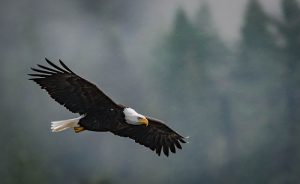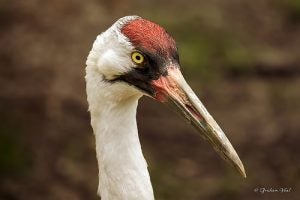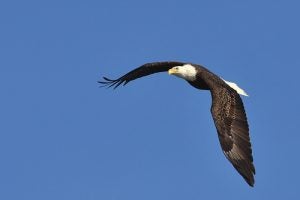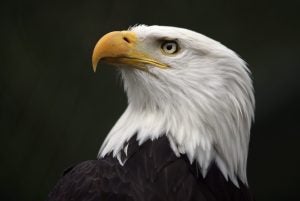The fierce beauty and proud independence of this great bird aptly symbolizes the strength and freedom of America. But as latter-day citizens we shall fail our trust if we permit the eagle to disappear. — President John F. Kennedy

Following the enactment of the Endangered Species Act in 1973, the bald eagle was listed as “endangered” throughout the lower 48 states, with the exception of five states where it was designated as “threatened.” Minnesota now has the largest numbers of nesting eagle pairs in lower 48 states. (Photo Credit: Bob Jensen)
In 1782, the bald eagle was officially declared the national symbol of the United States. It became the icon that evoked patriotism – a feeling of strength and power, of independence and courage. At the time, the population was at an estimated 100,000 birds.
In the 20th century, the population of bald eagles fell to dangerously low levels, leading to fears of extinction. Fortunately, decades of recovery efforts brought the species back from the brink – a testament to the meaningful milestones that can be achieved through effective conservation.
How we almost lost the bald eagle
A combination of wanton killing, habitat degradation and use of the pesticide DDT decimated the bald eagle population. The decline likely began as early as the late 1800s, as both eagle prey and eagles were hunted for the feather trade. By 1960, there were only 400 nesting pairs left in the lower 48. Read More













